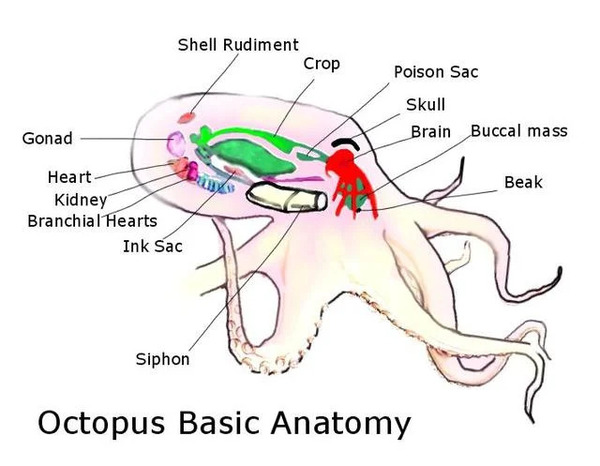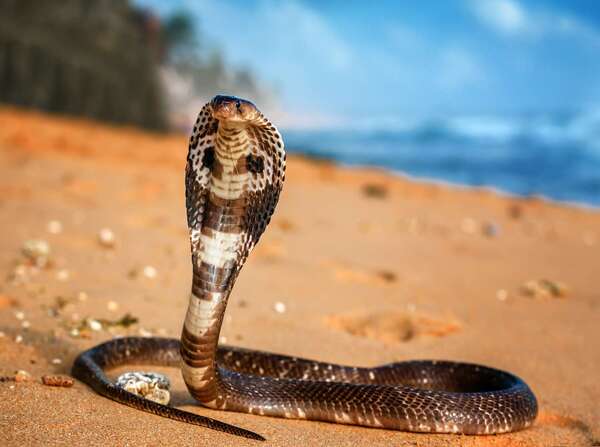When it comes to the animal kingdom, many creatures possess fascinating and unique digestive systems. But if you’ve ever wondered, “What animal has 9 stomachs?” the answer might not be as straightforward as you think. While no animal truly has nine separate stomachs, some creatures, such as the octopus, have incredibly complex and efficient digestive systems that are worth exploring.
In this article, we’ll delve into the anatomy of the octopus, why it’s sometimes mistakenly said to have multiple stomachs, and compare it with other animals that have multi-chambered digestive systems. By the end, you’ll have a better understanding of how these incredible creatures process food in ways that are unique to their biology.

The octopus, a member of the Cephalopoda class, is renowned for its intelligence, ability to camouflage, and remarkable flexibility. Its anatomy is just as intriguing as its behavioral abilities. Although the octopus doesn’t have 9 literal stomachs, its digestive system is highly specialized and designed for maximum efficiency.
The octopus has one primary stomach, but it possesses several other specialized organs that contribute to its complex digestion process. This is likely the source of confusion regarding the idea of an octopus having multiple stomachs.
Here’s how the octopus’s digestive system works:
Beak and Radula: The digestive process begins with the octopus’s sharp, bird-like beak, which it uses to capture and break down prey. Once food is in smaller pieces, it’s processed by the radula, a structure lined with tiny teeth that further grinds the food.
Salivary Glands: The octopus also has poisonous salivary glands, which help paralyze its prey, making it easier to digest tough materials like shells or crustaceans.
Esophagus and Stomach: After food is ground by the radula, it moves into the esophagus and then into the stomach. In this part of the digestive process, enzymes break down the food into nutrients the body can absorb.
Cecum and Digestive Gland: The food then travels to the cecum, where further digestion occurs. The cecum works in tandem with the digestive gland (often referred to as the “liver”) to absorb nutrients. This is a crucial part of digestion as it helps extract all the useful components from the food.
Intestine: Finally, any remaining waste material is passed into the intestine and expelled through the anus.
While it only has one true stomach, the octopus's entire digestive system, from its mouth to its intestines, works together in such a complex manner that it's sometimes misinterpreted as having multiple stomachs.

The idea that octopuses have multiple stomachs likely arises from their highly efficient and segmented digestive system. Though not literally possessing 9 stomachs, each part of their digestive process is so distinct and important that it can seem as though the octopus has several stomachs performing different tasks.
Moreover, octopuses are incredibly efficient hunters and digesters. Their ability to immobilize and break down tough prey has contributed to their reputation for having an elaborate, multi-stage digestive process.

While octopuses may not have 9 stomachs, some animals do possess multiple chambers in their digestive system, which serves specific functions in breaking down food. Let’s explore a few examples:
Cows and other ruminants (such as sheep and goats) are famous for having multi-chambered stomachs. They have four stomach compartments:
Rumen: Fermentation occurs here, breaking down complex plant materials.
Reticulum: This chamber traps any foreign objects and works closely with the rumen to regurgitate cud.
Omasum: Absorbs water and nutrients.
Abomasum: The true stomach, where enzymatic digestion takes place.
Camels and llamas, while also ruminants, have a slightly different setup with three stomach chambers, making their digestion somewhat less complex than cows but still multi-staged.
Many birds, especially seed-eating species, have a crop to store food and a gizzard filled with grit to grind food before it reaches their stomach. While these aren’t multiple stomachs per se, these specialized digestive organs work together similarly to multi-chambered stomachs in other animals.
Like the octopus, cuttlefish and squid have complex digestive systems but no multiple stomachs. Their systems are designed to process food efficiently using a combination of beaks, radulae, and specialized digestive glands.
Animals with multiple stomachs or digestive chambers usually share a common need: the breakdown of tough or fibrous food. Herbivores like cows and camels need to process plant materials that are difficult to digest, while birds with gizzards rely on their specialized digestive organs to grind up hard seeds and nuts.
In contrast, octopuses and other cephalopods primarily consume softer prey like fish, crustaceans, and mollusks. Their digestive system, while complex, is designed more for efficiency and rapid digestion of protein-rich diets rather than breaking down tough plant fibers.
While no animal actually has 9 stomachs, the octopus has a remarkably intricate digestive system that makes it one of the most efficient predators in the ocean. Its highly specialized organs, from its beak to its salivary glands and stomach, work together to process food quickly and effectively.
The idea of an animal with 9 stomachs may be an exaggeration, but creatures like cows and camels demonstrate that multiple stomach chambers are indeed a useful adaptation in the animal kingdom. For now, the octopus remains an incredible example of nature’s ingenuity, with a digestive system as unique as its otherworldly appearance.
animal tags: octopus
We created this article in conjunction with AI technology, then made sure it was fact-checked and edited by a Animals Top editor.
you may also like

Dinosaurs are among the oldest animals that have ever lived on Earth. They appeared on Earth about 240 million years ago and continued to exist until they became extinct about 65 million years ago. Dinosaurs came in all shapes and sizes, including the huge sauropods, carnivorous Tyrannosaurus, and C...

Tropical fish are a type of fish that live in warm waters. They have various meanings and symbols in different cultures and religions. Here are some common ones:1. Beauty and mystery: Tropical fish often have gorgeous colors and strange shapes, so they are often seen as symbols of beau...

The largest animal on earth is the blue whale (Balaenoptera musculus). The blue whale is a species of whale that lives in the deep seas of the world's oceans. An adult blue whale can be more than 30 meters long and weigh 173 tons, which is larger than an adult dinosaur.The blue whale's mouth...

The apple snail is a freshwater gastropod mollusk that is usually kept as an ornamental creature. The following are tips for raising and feeding apple snails: feed Apple snails are omnivores and they can eat many different types of food, including:...

The term "dog licking" comes from an Internet buzzword, which is usually used to describe the behavior of pursuing someone and showing excessive attentiveness and adoration. The word originated from the behavior of dogs licking their owners. It is used to describe some people who behave in a...

Cobras are some of the most fascinating and feared snakes in the animal kingdom. Known for their striking appearance and potent venom, they are often at the top of the food chain. However, they are not invincible and have a few natural predators. In this article, we’ll explore what animals eat cobr...

The ancients had some common nicknames for dragonflies: 1. Dragonfly: This is the most commonly used nickname for dragonflies, describing them in a simple and clear way. 2. Red-eyed dragonflies: Dragonflies have bright red compound eyes, which highlig...

First, let me make this clear: Feline transmissible diarrhea (contagious diarrhea) is a serious disease that requires diagnosis and treatment by a professional veterinarian. Self-treatment may not resolve the problem or may even delay the condition. However, here are some...
Email: jsset668#gmail.com (change # to @) Please indicate your purpose of visit! Guangdong ICP No. 2022053326 XML| map| Chinese

